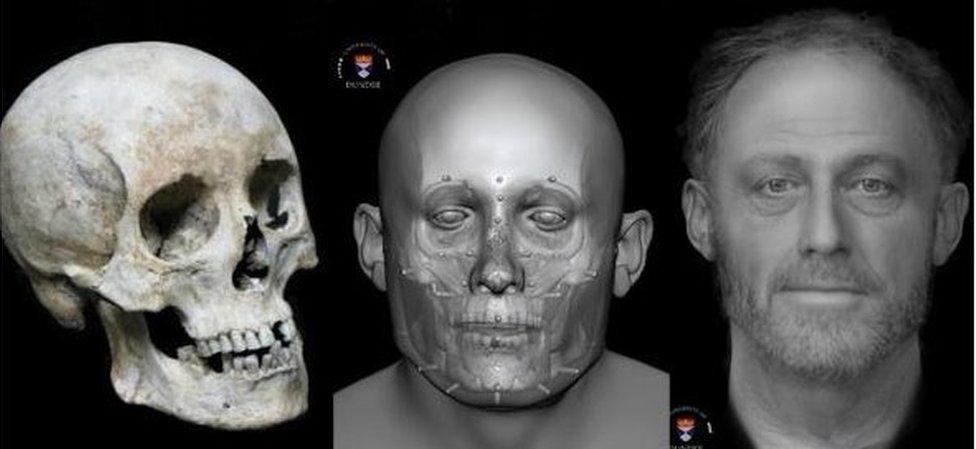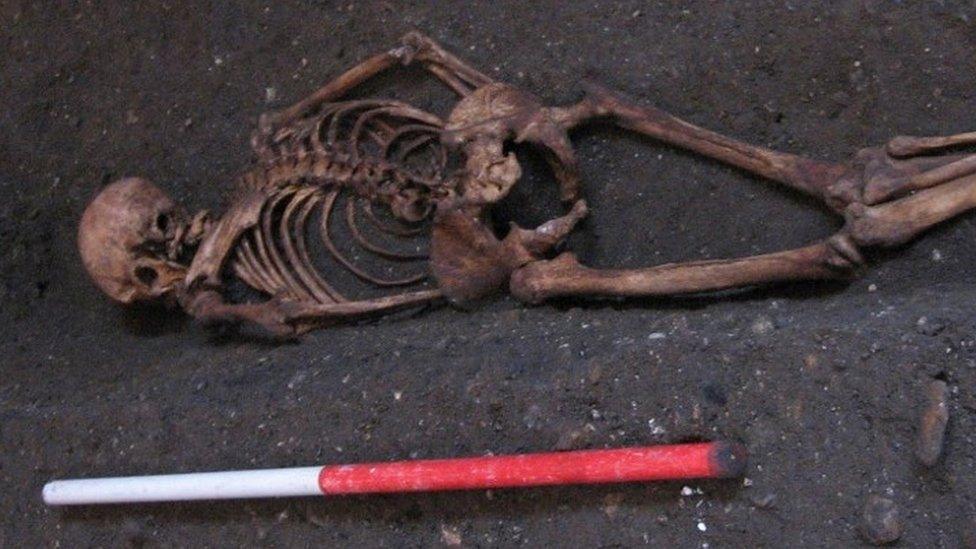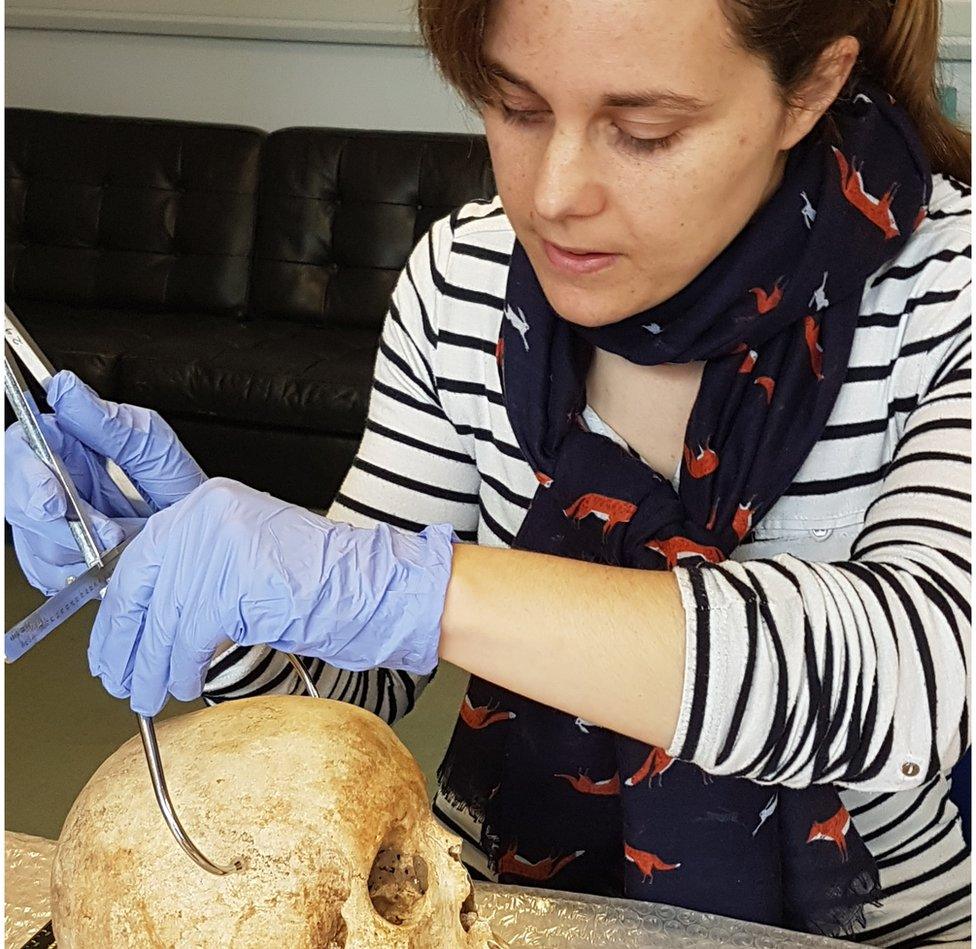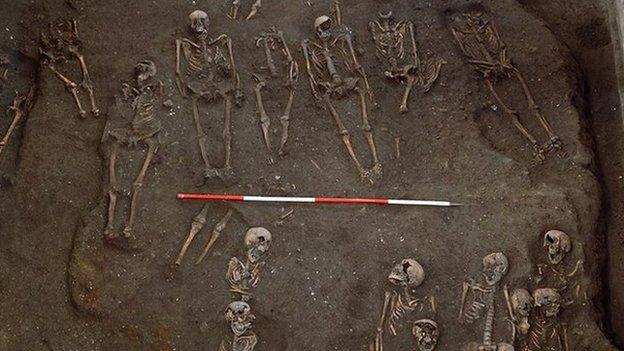Face of 13th Century patient recreated
- Published

Facial reconstruction technology shows what the man would have looked like
Scientists studying a medieval hospital graveyard in Cambridge have recreated the face of a 13th Century patient.
The skeleton - known formally as "Context 958" - was among 400 sets of remains found beneath St John's College during recent excavations.
Scientists believe the man died about 700 years ago and was a patient at the Hospital of St John, which preceded the college.
The study is one of the first to reveal how ordinary people of the time lived.
Context 958 was unearthed when one of the largest medieval hospital graveyards in Britain was discovered beneath the Old Divinity School of St John's College. The site was excavated between 2010 and 2012.
He was found face down, which archaeologists said was a "small irregularity for medieval burial".

The man's skeleton was found face down in the cemetery of St John's College, Cambridge
Bodies recovered during the work date from the 13th to 15th Centuries and are believed to be patients at the former hospital of St John the Evangelist, which stood opposite the graveyard until 1511.
The research team - a combination of Cambridge University's Division of Archaeology and the University of Dundee's Centre for Anatomy and Human Identification - pieced together the rudiments of the man's life story by analysing bones and teeth.
They used facial reconstruction technology to show what he might have looked like when he was alive.

Dr Sarah Inskip examines the skull of the 13th Century man, known as Context 958
Prof John Robb, of Cambridge University, said many of the "inmates" at the time were ill, aged or poor - and could not live alone.
He said: "Context 958 was over 40 when he died and had quite a robust skeleton with a lot of wear and tear from a hard working life.
"He was a working-class person, perhaps with a specialised trade of some kind.
"He had fallen on hard times, perhaps through illness, limiting his ability to continue working or through not having a family network to take care of him in his poverty."
He added: "We are interested in him and in people like him as they represent a sector of the medieval population which is quite hard to learn about - ordinary poor people."
The study forms part of the university's "After the Plague" project, which researchers will then compare with other medieval collections to build a picture of the lives of people living in Cambridge and urban England as a whole at the time.
- Published1 April 2015

- Published12 May 2015
